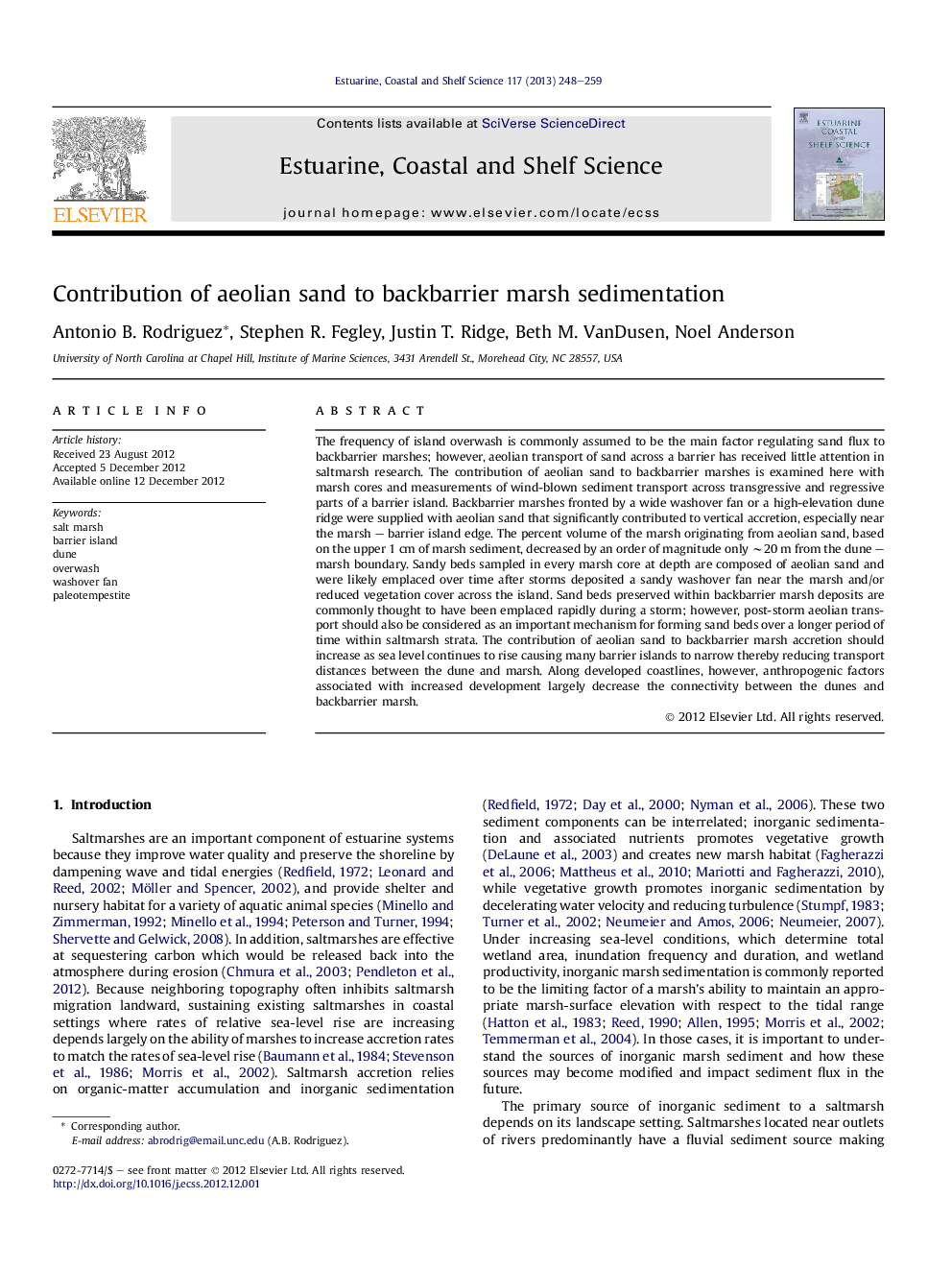| Article ID | Journal | Published Year | Pages | File Type |
|---|---|---|---|---|
| 4540100 | Estuarine, Coastal and Shelf Science | 2013 | 12 Pages |
The frequency of island overwash is commonly assumed to be the main factor regulating sand flux to backbarrier marshes; however, aeolian transport of sand across a barrier has received little attention in saltmarsh research. The contribution of aeolian sand to backbarrier marshes is examined here with marsh cores and measurements of wind-blown sediment transport across transgressive and regressive parts of a barrier island. Backbarrier marshes fronted by a wide washover fan or a high-elevation dune ridge were supplied with aeolian sand that significantly contributed to vertical accretion, especially near the marsh – barrier island edge. The percent volume of the marsh originating from aeolian sand, based on the upper 1 cm of marsh sediment, decreased by an order of magnitude only ∼20 m from the dune – marsh boundary. Sandy beds sampled in every marsh core at depth are composed of aeolian sand and were likely emplaced over time after storms deposited a sandy washover fan near the marsh and/or reduced vegetation cover across the island. Sand beds preserved within backbarrier marsh deposits are commonly thought to have been emplaced rapidly during a storm; however, post-storm aeolian transport should also be considered as an important mechanism for forming sand beds over a longer period of time within saltmarsh strata. The contribution of aeolian sand to backbarrier marsh accretion should increase as sea level continues to rise causing many barrier islands to narrow thereby reducing transport distances between the dune and marsh. Along developed coastlines, however, anthropogenic factors associated with increased development largely decrease the connectivity between the dunes and backbarrier marsh.
